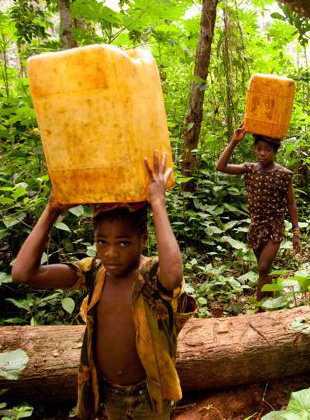Given the choice between asking friends to make a donation and a root canal without anesthesia, I know a number of people who’d chose the latter. Not I. Stay away from my gums if you please, give me a cause to believe in and off I go badgering friends like a dental professional with a sharp metal pick, sometimes hitting the right nerve but more often meeting painful resistance. Taking each fundraiser as a personal marketing challenge, yet I persist.
Ever the optimist, I actually believed that social media would change all that. No more biting personal calls. No more unnerving follow up emails. Just a couple of tweets and the money would pour in like ceramic in a perfect porcelain crown. Wrong again, medicine breath! As I found out recently, fund raising via social media is a true torture test, revealing the cracks in the various options, offering a pointed reminder that a lone tooth does not a marketing smile make.
My recent fund-raising operation started with an introduction to charity: water at the SuperGenius Word-of-Mouth conference back in July. There Digital VP Paull Young, explained how 4-year-old charity: water had used all sorts of viral marketing techniques to raise $20 million, every penny of which went to drill fresh water wells for those in need. Intrigued by their success, I later interviewed founder Scott Hamilton who spent an hour with me explaining how charity: water came into being. Totally blown away, I decided this would be the perfect way to test the power of my social network.
To facilitate personal fund raising campaigns like mine, charity: water set up MyCharityWater.org, which was indeed the easiest part of my effort. The whole process takes less than five minutes during which you name the campaign, set a fund raising target, upload a picture and generate a link to your page for sharing with friends. Excited about helping the Bayaka, one of the last remaining bushman tribes in Central Africa who are being forced out of the forest and denied access to clean water in the villages, I grabbed my link and started my campaign.
First up, a mass reaching article on FastCompany.com. The article profiled founder Harrison telling the story of his personal leadership journey and offered up “8 questions for aspiring leaders.” And while questions 1-7 did offer guidance, question number 8 was a barely veiled appeal, inviting the reader to learn more about the Bayaka and even make a donation. With over 1 million monthly visitors, you might have thought that at least one would have made an immediate donation, right? Guess again! Raising awareness is clearly not the same as raising money.
Next up, Twitter. With about 1140 followers, I wasn’t sure what to expect but I sure expected more than one response. My first tweets focused on my article on the Bayaka and these did generate some click-thrus to the article, a few retweets but not even one donation. Switching gears, I started linking directly to my campaign URL with a more direct appeal that persuaded one single generous sole. Thinking that perhaps it was a reach issue, I enlisted Twitter superstars like @TedRubin and @JeffreyHayzlett who kindly sent out tweets to their 55,000+ followers. But alas, when it comes to fundraising, Twitter appears to be all bark and no bite.
Undaunted, I moved onto Facebook hoping that a few of my +250 “friends” would actually demonstrate a little love. Much to my delight, a handful offered more than smiles, making donations and encouraging others to do the same. One true friend offered advice on how to improve my campaign by lowering the fund raising target, “if its too high, people won’t bother because they think their small donation won’t make a difference.” Taking his advice, I lowered the target to a still ambitious $16,000 but well below my naïve initial goal of $300,000!
Still way below goal, I turned to that old marketing standby, email, to push things along. Not a mass mailing, but rather a highly targeted one aimed at friends and acquaintances I thought might jump at the chance to give back or at least return a favor. Keeping my expectations low, I was actually pleasantly surprised when approximately 5% responded with open checkbooks if not open hearts. Imagine that, email worked better than Twitter when it came to generating transactional responses!
Shortly thereafter, I was at a bar with a bunch of former associates from Renegade and several asked me about The Bayaka and charity: water. They said, “Hey I saw your tweets but what’s the deal?” I explained how a $20 donation would provide clean water for 1 person for an entire year and how not having clean water lead to disease and array of other horrific yet preventable social problems. The conversation moved on but the next day, my donation count nearly doubled.
So, while my torture test is not quite over, the interim conclusions are as obvious as a toothache. First, Twitter is more like a mass marketing vehicle building awareness but not necessarily generating action. Facebook is a more intimate place than Twitter where friends can and will engage. Email is quite effective if you have a strong list. And lo and behold, good old-fashioned 1:1 conversation proved to be the most powerful social media of all.
PS–If you found this post valuable, feel free to donate $20 which will provide clean water for 1 person for 1 year!
PSS–If you have found any of my posts valuable, feel free to donate $40 which will provide clean water for 2 people for 1 year.
 8. Who the heck are the Bayaka and how can I help?
8. Who the heck are the Bayaka and how can I help?